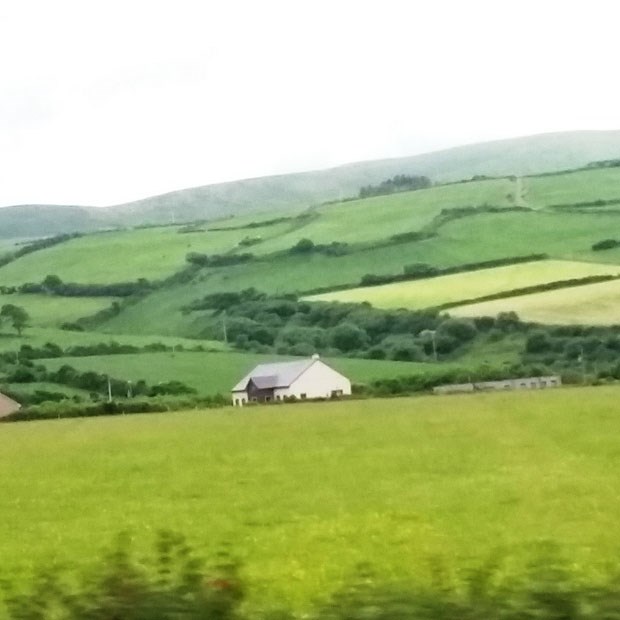Ireland, on this my first visit, is a mélange of impressions.
For starters, looking out of my plane window as we circle the countryside on our approach to Dublin, I can't but think how appropriate the description "The Emerald Isle" is even though it borders on cliché.
Below me are fields flung like green counterpanes over the land, bottle-green hedgerows that frame thread-like lanes, olive-green groves of trees which border clusters of townhouses, and lustrous green-leafed deciduous trees shading the lawns of stately county estates.
I am on a two-week trip through both the Republic of Ireland and Northern Ireland, and each day is alive with song and music. Many of these are more Irish-American than Gaelic, but most are familiar and well loved melodies not just in Ireland, but all over the world. Danny Boy is almost Ireland's national anthem: I hear it sung by a soulful tenor on the stage of Taylor's Three Rock Pub in Dublin, played on the accordion by a street musician in Derry and on an Irish harp at a banquet in Cabra Castle.
And then there's Galway Bay, the wistful lyrics and music come alive as we drive along the Galway waterfront, the waves lit by the setting sun. In Kilarney, I'm reminded of the ballad of the American who wanted to buy it, and was told, "If you can buy all the stars in the sky, if you can buy two blue Irish eyes... then you can buy Kilarney!" Ireland's landscapes are as varied as her moods. Pale mists drift across the waters around the remote Blaskit Islands, lending them an aura of mystery. Once home to hardy farmers, fishermen, writers and artists, their history is recorded in the Blasket Centre in Dunquin, in the Dingle Peninsula of County Kerry.
The brooding Cliffs of Moher loom shadow-like in a morning fog, but as the sun comes out, they stand in rugged silhouette against the sky reducing people walking along their crests to coloured dots. And then there are Irish legends like the one they tell at the Giant's Causeway. The huge piles of hexagonal basalt rocks strewn across the land and water were placed by an Irish giant, Fionn MacCool, to take up the challenge to fight the Scottish giant Benandonner who dwelt on the island of Staffa.
Rural Ireland with its rolling meadows is dotted with country houses and fences. We stop one morning at a farm for a country tea with scones, homemade jam and thick whipped cream; on another day we are teatime guests at Sheans Horse Farm, where our chatty hosts and hostess ply us with hearty helpings of homemade biscuits and tarts.
Sheep graze on steep hillsides near the rugged coast of Kerry and at Kissane Sheep Farm we watch a demonstration by a team of collies who, trembling with eagerness, bound into action at the sound of a whistle, and herd their flocks adroitly into pens.
In a nearby shed, a shearer makes swift work at fleecing a large bemused looking sheep. At another corner of the shed, a nursery pen with ewes and their babies draws young visitors who delightedly stroke tiny lambs.
Ireland's small towns are charming, and the pretty little village of Cong, where the movie The Quiet Man was filmed, is no exception. Statues of John Wayne and Maureen O'Hara captivate visitors, and our group eagerly follows our guide through the streets of this real life movie set. Strains of the hauntingly beautiful Isle of Innisfree from the film wafts across the street from the Quiet Man Museum.
Travel Writers' Tales is an independent newspaper syndicate that offers professionally written travel articles to newspaper editors and publishers. To check out more, visit www.travelwriterstales.com.



